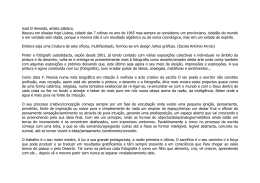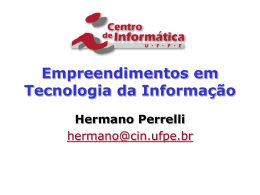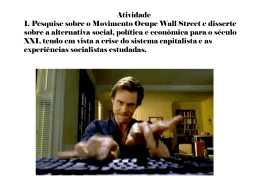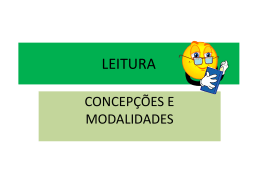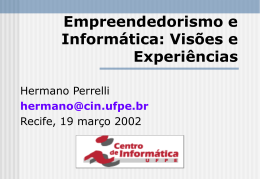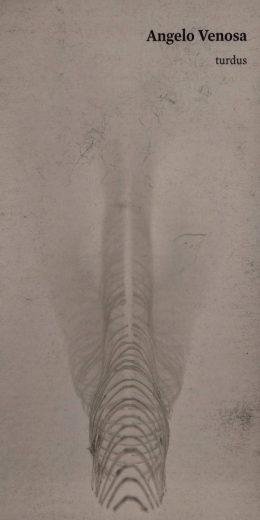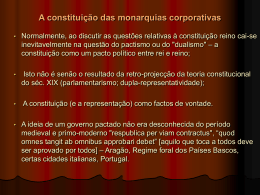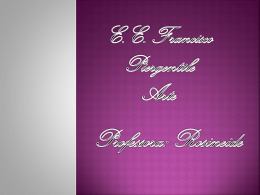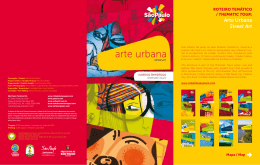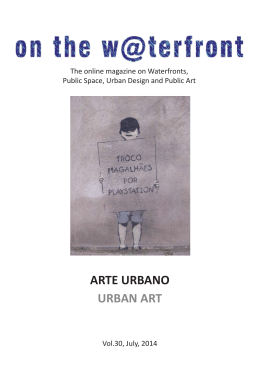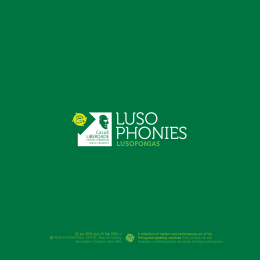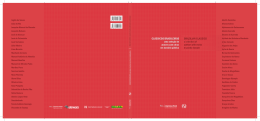Presidenta da República Dilma Vana Rousseff Ministro da Fazenda Guido Mantega Presidente da Caixa Econômica Federal Jorge Fontes Hereda A CAIXA é uma das principais patrocinadoras da cultura brasileira, e destina, anualmente, mais de R$ 60 milhões de seu orçamento para patrocínio a projetos culturais em espaços próprios e espaços de terceiros, com mais ênfase para exposições de artes visuais, peças de teatro, espetáculos de dança, shows musicais, festivais de teatro e dança em todo o território nacional, e artesanato brasileiro. Os projetos são selecionados através de seleção pública, uma opção da CAIXA para tornar mais democrática e acessível a participação de produtores e artistas de todas as unidades da federação, e mais transparente para a sociedade o investimento dos recursos da empresa em patrocínio. A exposição “Street Art - um panorama urbano” traz à CAIXA Cultural Brasília uma arte que nasceu nas ruas, até pouco tempo marginalizada, mas que vem tomando espaço relevante no cenário da cultura pop contemporânea. A partir de uma seleção proposta pela curadora portuguesa Leonor Viegas, o público brasiliense poderá conferir um expressivo conjunto de obras de artistas renomados internacionalmente, assim como de artistas brasileiros cujo trabalho tem alcançado grande visibilidade no cenário mundial. Com esta exposição, a CAIXA reafirma sua política cultural, sua vocação social e a disposição de democratizar o acesso aos seus espaços e à sua programação artística, cumprindo, desta forma, seu papel institucional de estimular a disseminação de ideias, mantendo viva sua vocação de abrigar e promover a pluralidade de pensamento. Caixa Economica Federal, one of the most important sponsors of the Brazilian art and culture, gives annually more than R$ 60 million of its budget for sponsoring cultural projects in their own spaces and spaces of others, emphasizing the visual arts exhibitions, theater plays, performances, dance, musical concerts, theater and dance festivals throughout the national territory and Brazilian handicraft. The sponsored projects are selected through public bidding, a choice of Caixa Economica Federal Bank to make more accessible and democratic, the participation of producers and artists around the country, as well as giving more transparency to the use of company resources. The exhibition “Street Arte – An Urban Panorama” brings to Brasilia Cultural Caixa the art that was born on the streets and until very recently was sidelined, but is taking up considerable space in the setting of contemporary pop culture. Starting from a selection proposed by the Portuguese curator Leonor Viegas, the Brasilia public can see a significant group of work by internationally renowned artists as well as Brazilian artists whose work has achieved great visibility on the world scenario With this exhibition, Caixa Economica reaffirms its cultural politics, its vocation to act in the social environment and a willingness to democratize access to its spaces and its artistic programming, fulfilling its institutional role to encourage the dissemination of ideas, thus, keeping their vocation to promote and shelter the plurality of thought. CAIXA ECONÔMICA FEDERAL É incontornável que o espaço urbano tenha evoluído, ao longo dos milênios, como espaço gerador de propostas culturais inovadoras. A arte que nasceu nas ruas e até há pouco tempo era marginalizada conquistou seu lugar na cultura pop contemporânea. O graffiti e o street art serão a marca da atual geração. Nas últimas décadas as grandes metrópoles cresceram em ritmo acelerado, algumas de forma mais ordenada que outras, mas todas deram espaço a novos fenômenos sociais caracterizados pelo choque da vontade individual e do conjunto de regras que modela estas sociedades. A marginalidade desse fenômeno se deve em parte à propriedade privada, cujo conceito muitas vezes foi agente contra o artista oprimido ou proibido por quem não gosta de ver as suas paredes pintadas sem que tenham sido consultados. A exposição Street Art - Um panorama urbano traz a Brasília obras de alguns dos maiores artistas urbanos que fizeram das ruas as suas galerias, conversando diretamente com seus admiradores e reconhecendo a continuidade entre o trabalho na rua e no museu. O público terá a oportunidade de ver estéticas e técnicas utilizadas nos trabalhos efêmeros da rua em sua transposição para o trabalho permanente apresentado em outros materiais, dentro de portas, num conjunto de diferentes técnicas e em suportes diversos: do stencil à pintura livre, do figurativismo ao lettering, do vídeo à escultura. O fio condutor dos convidados é seu background: todos utilizam a rua para expôr o seu trabalho. Espero que o público goste da seleção e que conheça um pouco mais dessa corrente artística dos nossos dias. There’s no doubt that, through the ages, the urban space has evolved to a place of new cultural proposals. The art which grew in the streets and up until recently was marginalized, has become the contemporary pop culture. Graffiti and street art will be the label of the current generation. In the last years, the large countries did grew intensively, some faster than others, some in a more organized way, but, without exception, new social phenomena has taken place as a result of the conflict between the individual purposes and the rules of every society. The sense of private ownership prevented many artists to express themselves, because the owners didn’t like to see their walls painted without their permission, and gave the phenomenon a clandestine feature. The exhibition Street Art – Um panorama urbano – brings to Brasília the work of some of the best street artists that made the streets their own galleries, speaking directly to their admirers extending the continuity from the street into the museum. The public will have an opportunity to see techniques and aesthetics used in the ephemeral street pieces to the permanent specimens presented in other materials behind closed doors. The connection between my guests is their background: all of them use the street to exhibit their work. I hope that the public enjoys the selection and learns a little bit more about this artistic movement. Leonor Viegas BANKSY Grafiteiro, pintor, ativista político e diretor de cinema britânico, conhecido mundialmente por espalhar nas ruas suas obras de arte irreverentes, que modificaram conceitos, incitaram à reflexão e alteraram a forma como os graffitis são vistos hoje em dia. Sua constante ironia, audácia e o feitio sorrateiro fazem de Banksy o mais e mundialmente conhecido “artista desconhecido”. Seu primeiro filme, Exit Through the Gift Shop, foi indicado para o Oscar de melhor documentário em 2011. Graffiti artist, painter, political activist and British film director, is known worldwide for spreading irreverent artworks in the streets, which changed conceptions, prompted reflection and changed the way “graffiti” is seen today. Thus, his constant irony, daring and sneaky shape make Banksy the most famous unknown artist worldwide. His first film, “Exit Through the Gift Shop”, was nominated to the Oscar for Best Documentary in 2011. http://www.bbc.com/news/uk-england-kent-29594273, 03/11/2014 http://oglobo.globo.com/cultura/artes-visuais/mural-de-banksy-vandalizado-comdesenho-de-penis-14229991 HERBERT BAGLIONE Baglione teve seu primeiro contato com o graffiti em 1992. Em 1999 começou a explorar o espaço urbano de forma única a partir de dois interesses: arquitetura e fotografia. Naquele mesmo ano, o artista pintou sua primeira sombra em São Paulo e criou o projeto “1000 Shadows” que se espalhou por diversos países, como EUA, França, Espanha, Alemanha, Tunísia e Itália. O cerne do trabalho está na sua relação com questões afetivas: a morte, a frieza humana, a família, o mundo e o trabalho de outros artistas aliados a um forte desejo de preservar sua própria capacidade de se surpreender com o mundo a seu redor. Baglione had his first contact with graffiti in 1992. In 1999 he began to explore the urban space in a unique way because of his interests in architecture and photography. In the same year, the artist painted his first shadow in São Paulo and created the Project “1000 Shadows” that spread to several countries such as USA, France, Spain, Germany, Italy and Tunisia. The heart of his work is formed by his relationship to emotional matters such as death, human coldness, the family, the world and the work of other artists and also by his strong desire to retain his sense of wonderment as it relates to the world around him. “1000 Shadows”, Rio de Janeiro, Brasil, 2014 “1000 Shadows”, Frankfurt, Alemanha, 2013 HOWNOSM Nascidos em San Sebastián, criados em Düsseldorf e, atualmente, residentes em Nova York, How and Nosm são gêmeos idênticos conhecidos por seus murais em grandes dimensões. As imagens recursivas de vermelho, preto e branco são imediatamente reconhecíveis e chamam atenções devido à escala impressionante e ao intricado detalhamento. Inicialmente, sua paleta de cores era limitada por motivos práticos, entretanto, essa se tornou sua marca e uma escolha formal que tem permitido a esses artistas elevar o trabalho com o aerosol a outro âmbito. Ambos participam de um dos mais renomados coletivos do mundo, a TATS CRU. Born in San Sebastián, raised in Düsseldorf and currently residing in New York forthelast15 years, How and Nosm are identical twin brothers known for their large scale graffiti murals. The red, black, and white-based imagery is instantly recognizable and calls attention by the impressive size and the intricate details. Initially the color palette was restricted by practical reasons but now became a distinct calling card and formal choice that has allowed these artists to push spray paint to a new level. They are part of one of the most legendary collectives of the world, TATS CRU. “M”, Rio de Janeiro, Brasil, 2010 “Releasing Pressure”, Rio de Janeiro, Brasil, 2011 JEF AEROSOL Jef vive e trabalha em Lille (no Norte da França) desde 1984, mas suas criações estão espalhadas por todo o mundo. É um dos pioneiros do movimento que hoje chamamos arte urbana. Começou as suas intervenções em 1982, em Tours, no seu país natal. Junto com outros artistas das primeiras gerações do pós-guerra que se expressaram nas ruas, que romperam, creio, os limites das telas e dos espaços convencionais das galerias e se tornaram expositores de museus gratuitos, a céu aberto. Para além de street artist, Jef Aerosol é também músico e gravou com diversas bandas. Jef has been living and working in Lille (in the North of France) since 1984, but his works are exhibited worldwide. He was one of the pioneers of a movement that is now called “urban art”. He began his interventions in 1982 in Tours, in his home country - France. Together with other artists, he was one of the first post-war generation artists that broke out of the canvases in galleries to express themselves in the streets, creating free outdoor museums. Besides being a street artist he is also known as a musician, having recorded with several artists. “Sitting Kid”, Rio de Janeiro, Brasil, 2014 “Sonho”, Rio de Janeiro, Brasil, 2014 ±MAISMENOS± ± é um projeto de intervenção artística que tem pensado os modelos de estruturação política, social e econômica que gerem a vida das sociedades atuais. ± surgiu em 2005, no âmbito de um plano universitário, no intuito de criar um trabalho de rua que estivesse ligado ao graffiti, mas afastado da forma convencional dada à contestação. ± é a representação visual do colapso dos sistemas econômicos (+ = 0) e de suas consequências sociais, transmitindo claramente um ponto de vista sobre essa realidade e, apesar do seu caráter crítico e incisivo, funciona ao mesmo tempo como uma tela em branco, um ícone aberto, em que as pessoas conseguem projetar seus desejos, medos ou suspeitas. ± is an artistic intervention project that has been reflecting on the model of political, social and economical organization that manages life in current societies. ± project was born in 2005 associated to an university plan, intending to create an intervention in the street, which was connected to graffiti, but far from the conventional format of contestation. ± is the visual representation of the collapse of the economic system and the resulting social consequences. ± attempts to clearly transmit a point of view which regards to that reality and, besides the observational and incisive character, works as a blank canvass where people can project their desires, fears or suspicions. ± NO WAY±, Stavanger, Noruega, 2014 “± ZERADO ± Crime Central do Brasil”, Rio de Janeiro, Brasil, 2014 NUNCA Um dos mais importantes muralistas do Brasil, começou a pintar aos 12 anos nas ruas de Itaquera, em São Paulo e desenvolveu um estilo próprio, focado na identidade e na cultura brasileiras, em que questiona os processos culturais e criativos na globalização. Seus trabalhos figuram hábitos de sociedades tribais e urbanas, mostrando suas diferenças e afinidades. Na opinião de Nunca, os murais costumam ser atos políticos “porque, em diferentes níveis, são o compromisso e o interesse do artista em uma forma concreta, por exemplo, em criar arte como contraparte para a colonização à qual o Brasil está submetido”. It’s one of the most important muralists of Brazil. He began to paint on the streets of Itaquera, São Paulo, at the age of 12. He developed his own style focusing on the Brazilian culture and identity, questioning the cultural process and creativity through the globalization. His works portrays habits of tribal and urban societies, showing all the differences and affinities.In his opinion, murals are often political acts “because, at different levels, undertake the artist’s interest in something concrete, for example, in creating counterparts for colonization to which Brazil is submitted.” Miami, EUA, 2009 - Créditos / credits: Nunca Lisboa, Portugal, 2014 P I X E L PA N C H O A cor e a forma foram apresentadas a Pixel por seu avô, um pintor ocasional. Mas, com o passar do tempo, a paixão no neto por arte e design foi aumentando, e o levou à Academy of Fine Arts, em Valencia, na Espanha, onde obteve um diploma e se familiarizou com o graffiti e a arte urbana. A narrativa em seu trabalho nos leva a um mundo esquecido, ocultado sob uma camada de pó, em que robôs quebrados e amassados são encontrados em decomposição no solo, em que ferro e cobre oxidados formam corpos caídos, como se fossem descartados, no esquecimento. A força das referências materiais e gestuais que humanizam esses robôs é a marca inconfundível do artista. Pixel was introduced to color and form by his grandfather, who painted occasionally. Later on, his passion for art and design led him to the Academy of Fine Arts in Valencia(Spain) where he obtained his degree. During this time he became familiar with the graffiti and the street art scenes. The narrative in Pixelpancho’s work guides us to a forgotten world that sits under a blanket of dust. In this world, broken and dented robots are found decaying into the ground, their iron and rusted copper bodies falling and laying as if they are discarded into oblivion. The strength of physical and gestural references that humanize these robots results in the artist’s unmistakable mark. San Juan, Porto Rico, 2013 Lisboa, Portugal, 2014 RERO Começou por fazer graffiti sob o nome Aurer, mas rapidamente começou a se sentir limitado pela lata de spray e passou a explorar as imagens no uso da tipografia. Atualmente, cria um trabalho entre a arte urbana e arte conceitual, questiona o próprio contexto da arte bem como os códigos que governam imagens e a propriedade intelectual, com uma sigla que surge regularmente em suas peças: WYSIWYG (What You See Is What You Get). O artista questiona os limites entre privacidade e a publicação, entre o que ocultamos ou revelamos, deliberadamente ou não, conscientemente ou não, especialmente na web. He began with graffiti, using the name Aurer, however he soon felt limited by the spray can and decided to turn to the use of typography. Nowadays he creates his work halfway between urban art and conceptual art, questioning the context of art as well as the codes that subject the images and the intellectual property, with an acronym that regularly crops up in his pieces: WYSIWYG (What You See Is What You Get). The artist questions the boundaries between privacy and what we reveal in public, deliberately or not, consciously or not, privately or on the web. “There is no alternative...” Rio de Janeiro, Brasil, 2014 “Culture serves capitalism...”, Rio de Janeiro, Brasil, 2014 STENLEX Sten&Lex são conhecidos na história do stencil por terem criado uma nova técnica, o halftone stencil, cujos retratos são criados com milhares de linhas. Em 2010 começaram a produzir o que chamam de “stencil poster”, técnica derivada da união de duas das principais técnicas de arte de rua: exatamente stencil e pôster – ou o simples “lambe lambe”. Em que colam um stencil num papel na parede e, em seguida, pintam sobre ele, destroem a matriz de cujos restos se compõe uma parte do trabalho final. Com esta técnica, cada trabalho se torna único, porque a matriz permanece na parede e vai se deteriorando conforme o passar do tempo, cada uma a seu tempo. Sten&Lex are best known in the history of stencil making since they are the creators of the halftone stencil technique. Their stencil portraits are composed by thousands of lines. In 2010 they started producing what they call “stencil poster”. The technique derives from the union of two of the most important techniques of the street art: stencil and poster. They glue a stencil cut on paper and then on the wall and then they paint on it and destroy the matrix. The matrix is destroyed and its scraps become part of the work itself. With this technique, the work becomes unique because the matrix remains on the wall, and it is worn out with the time. Bari, Itália, 2013 Foligno, Itália, 2012 VHILS Alexandre Farto aka Vhils, é um jovem artista português que tem cravejado seu nome na história do street art em picotar as paredes de todo o mundo com rostos desconhecidos. Sua arte é brutal, complexa e intensamente urbana. A poesia visual de Vhils tem sido mostrada em várias exposições individuais e coletivas, assim como em inúmeras intervenções livres em paredes e eventos, numa multiplicidade de países. Atualmente, a maioria de seus trabalhos parte da destruição ou da desconstrução para a criação, num processo que acaba por reter a memória de uma matéria que outrora foi nova, dando lhe uma ainda mais nova vida. Alexandre Farto aka Vhils is a young portuguese artist who has “engraved” his name in the history of street art by perforating the unknown faces of his subjects on walls, all over the world. Brutal, complex and intensely urban, Vhils’ visual poetry has been shown in several individuals and collective exhibitions, as well as countless free interventions on walls and events in a multiplicity of countries. Currently, the majority of his pieces begin with the destruction or deconstruction in order to begin creating. This process allows to keep the memory of a substance that once was new by giving it a new life. Rio de Janeiro, Brasil, 2013 Grottaglie, Itália, 2011 FICHA TÉCNICA Curadoria e texto [curated by and text] Leonor Viegas Produção Local [local production] Jenny Choe Coordenação Geral [projetc manager] Leonor Viegas e Luiz Prado Assessoria de imprensa [press ofice] Guadalupe Produções Design de Luz [light design] Adriana Milhomem/ Luz em Formas Realização [produced by] República Universal das Artes Design Gráfico [graphic design] Vasco Patrocínio [sponsored by] Caixa e Governo Federal
Download
